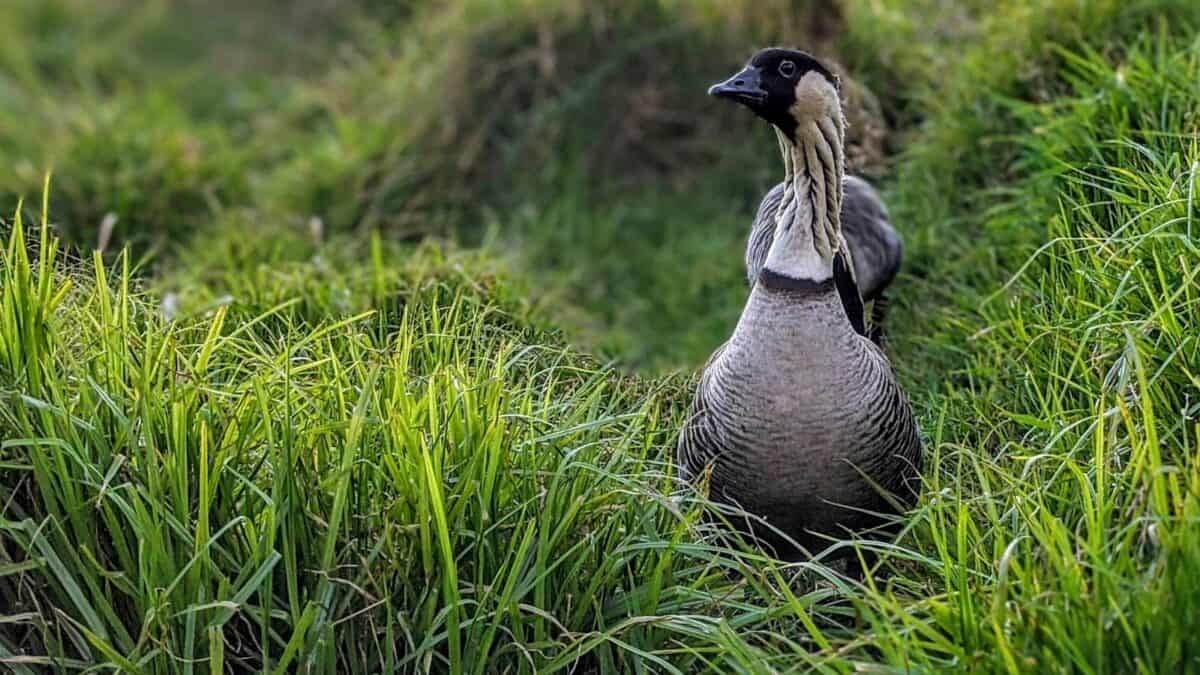The Hawaiian archipelago, with its isolation in the middle of the Pacific Ocean, has become a sanctuary for some of the world’s most unique avian species. Millions of years of evolution in this remote paradise have produced birds found nowhere else on Earth, with adaptations perfectly suited to the islands’ diverse habitats – from dense rainforests to volcanic slopes. These endemic species represent not just a biological treasure, but also embody the cultural heritage of Hawaii, featuring prominently in ancient legends, chants, and art. However, the story of Hawaiian birds is also one of tragedy and hope, as many species face extreme conservation challenges while dedicated efforts continue to save these feathered jewels from extinction. Let’s explore the fascinating world of Hawaii’s rare and remarkable birds that have managed to thrive against all odds in this isolated island chain.
The Evolutionary Marvel of Hawaiian Birds
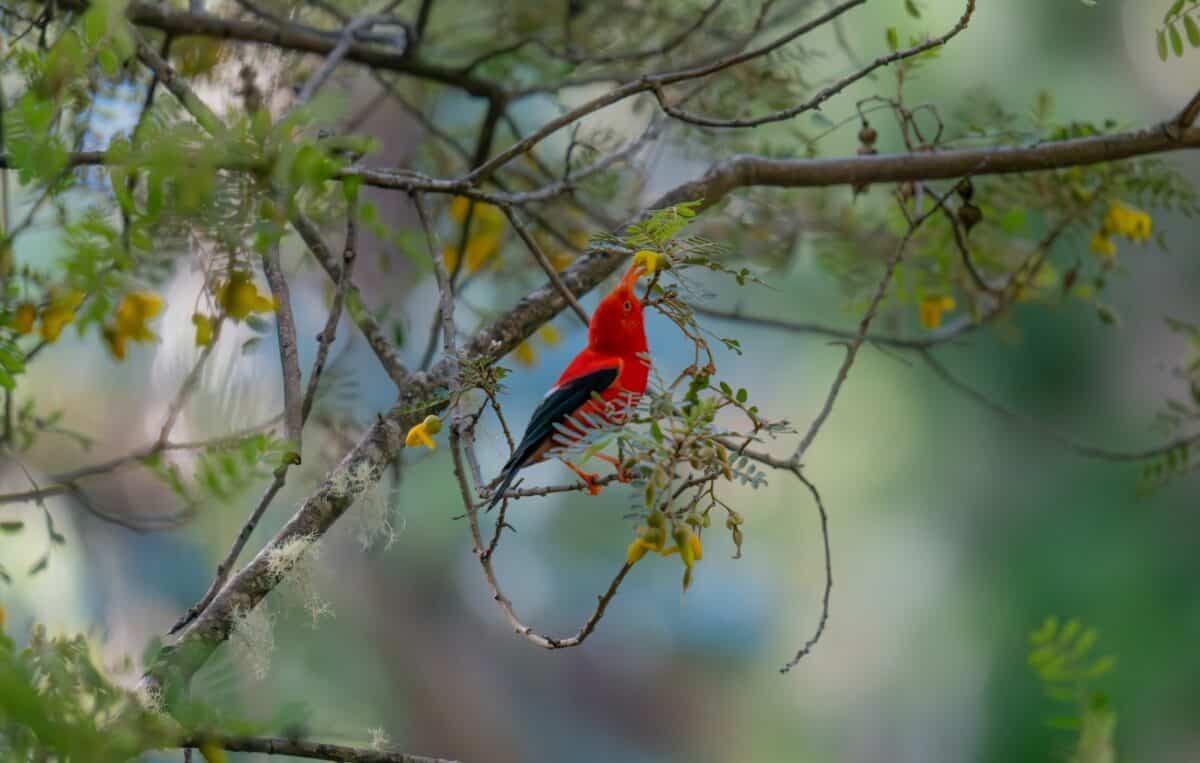
Hawaii’s birds represent one of the most dramatic examples of adaptive radiation in the animal kingdom. From just a few ancestral species that reached these remote islands, nature produced a stunning array of specialized birds found nowhere else. The most famous example is the Hawaiian honeycreepers (subfamily Drepanidinae), which evolved from a single finch ancestor into more than 50 species with wildly different beak shapes – from straight beaks for insect catching to deeply curved bills for sipping nectar from specific flowers. This spectacular diversification occurred because the birds encountered virtually no competition or predators upon arrival. Today, sadly, more than half of Hawaii’s 55+ endemic bird species have been lost to extinction, with many survivors teetering on the brink. This makes the remaining birds all the more precious as living examples of evolution’s creative power in isolation.
The Majestic ‘Io (Hawaiian Hawk)
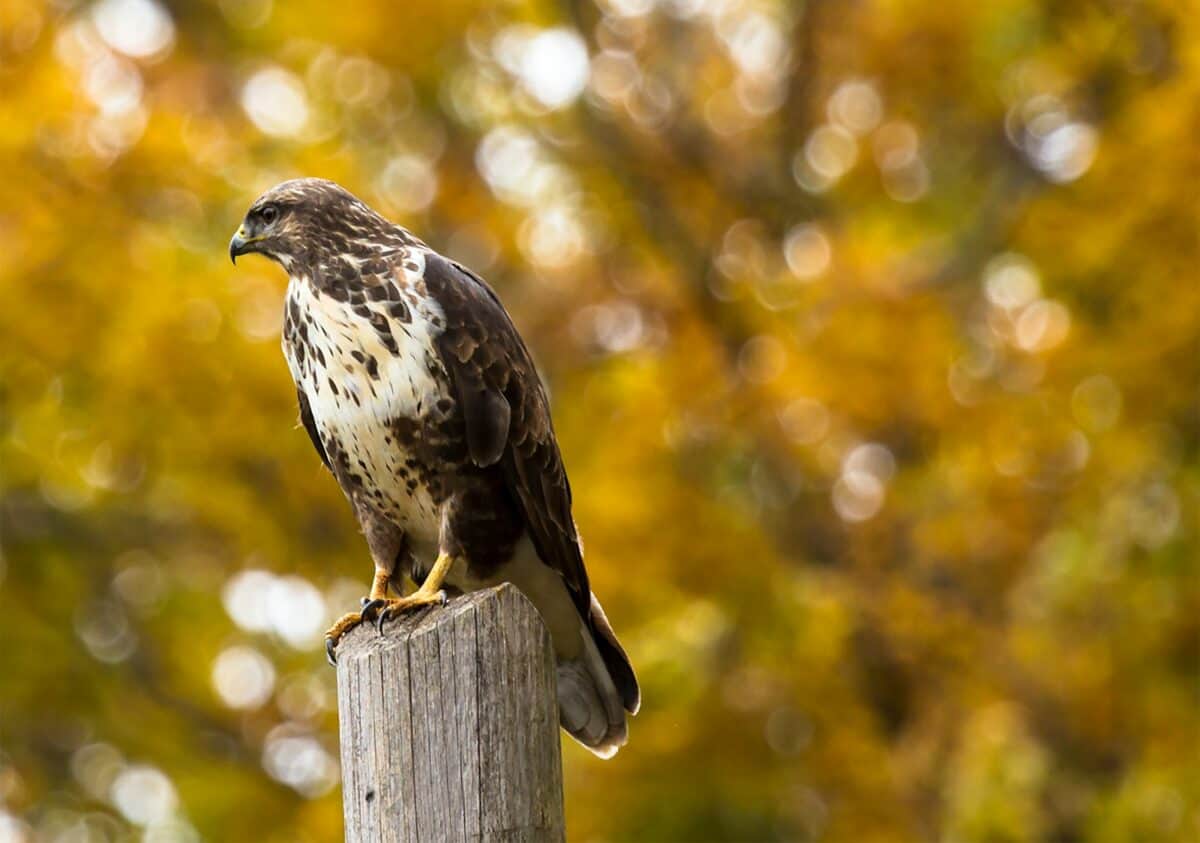
Soaring above the varied landscapes of the Big Island is the ‘Io or Hawaiian hawk (Buteo solitarius), a powerful raptor and one of Hawaii’s only two remaining endemic birds of prey. With a wingspan reaching up to 3 feet, this majestic bird comes in two distinct color morphs – a dark phase with chocolate-brown plumage and a light phase featuring a dark brown head and lighter underparts. Once revered in Hawaiian culture as an ‘aumakua (family guardian spirit), the ‘Io was considered a manifestation of royalty and power. These adaptable predators hunt from perches or while soaring, feeding primarily on rodents, insects, and small birds. The ‘Io represents a remarkable conservation success story – once endangered, it has rebounded sufficiently to be downlisted to “near threatened” status. However, habitat loss and introduced predators continue to challenge its long-term survival on its single-island home.
The Precious Nēnē (Hawaiian Goose)
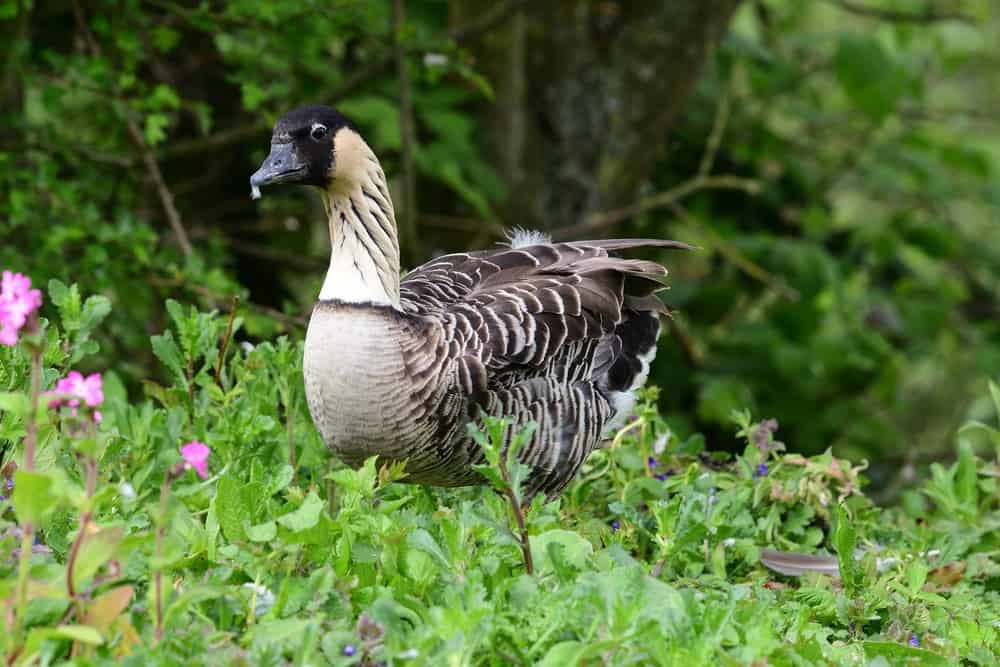
The Nēnē (Branta sandvicensis) stands as Hawaii’s state bird and a testament to dedicated conservation efforts. Descended from Canada geese that arrived approximately 500,000 years ago, these birds evolved in Hawaii’s predator-free environment, developing reduced webbing between their toes that allows for better grip when traversing lava flows and reduced wing muscles as they became less migratory. Once numbering in the thousands across the islands, the Nēnē population plummeted to just 30 birds by 1952 due to hunting, introduced predators, and habitat degradation. Through captive breeding programs and habitat restoration, today there are approximately 3,000 Nēnē distributed across Hawaii, Maui, Kauai, and Molokai. Though still vulnerable, their recovery from the brink of extinction represents one of Hawaii’s most inspiring conservation stories, showing how human intervention can reverse seemingly hopeless situations for endangered species.
The Elusive ‘Alala (Hawaiian Crow)
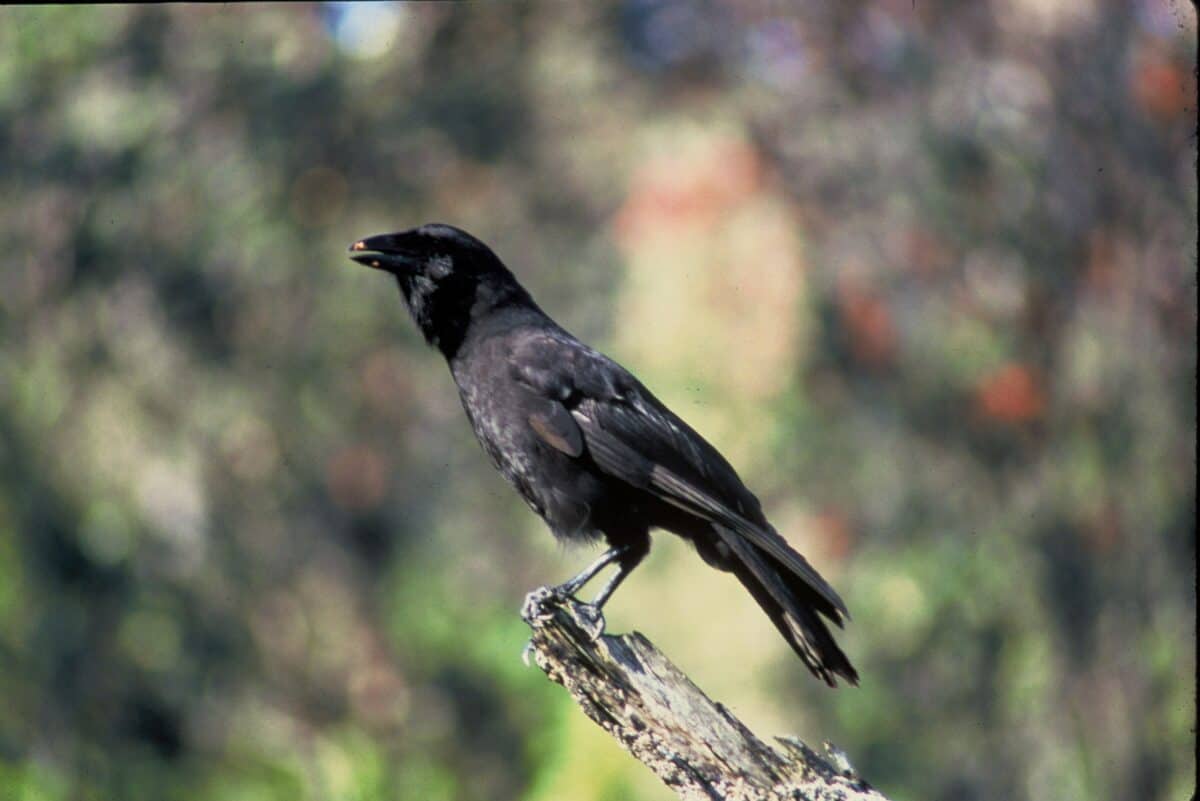
The ‘Alala (Corvus hawaiiensis) embodies both the tragedy and hope of Hawaiian bird conservation. This intelligent corvid, endemic to the Big Island of Hawaii, is distinguished by its brown-black plumage, straight bill, and its remarkable vocal repertoire that includes flute-like notes, caws, and whistles. Culturally significant in Hawaiian traditions as a family guardian spirit, the ‘Alala once played a crucial ecological role as a seed disperser for native plants. Tragically, the ‘Alala became extinct in the wild in 2002 due to a perfect storm of threats: habitat loss, introduced diseases, predation by non-native mammals, and competition from introduced birds. The species survives today only through captive breeding programs managed by the Keauhou and Maui Bird Conservation Centers. Since 2017, conservation teams have been releasing captive-bred birds into managed forest areas of the Big Island, though these efforts have faced significant challenges with predation and adaptation. Despite the setbacks, the program continues, offering hope that this culturally important species might one day thrive again in Hawaii’s forests.
The Vibrant ‘I’iwi (Scarlet Honeycreeper)
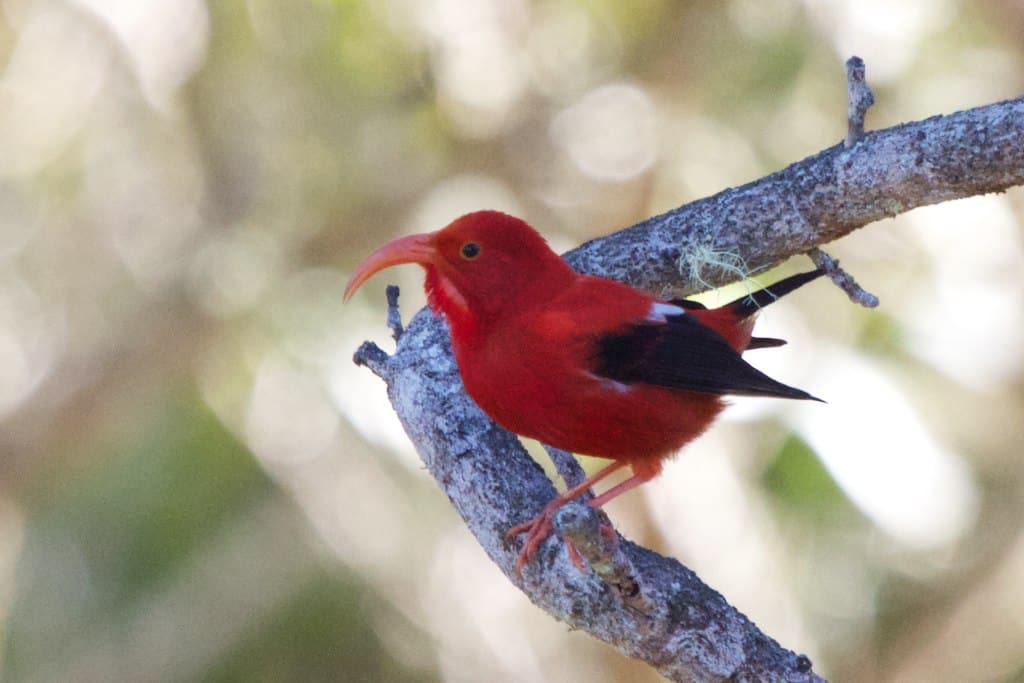
The ‘I’iwi (Drepanis coccinea) represents one of the most visually striking birds in Hawaii with its brilliant scarlet plumage, black wings, and distinctive curved salmon-colored bill perfectly adapted for sipping nectar from lobeliad flowers. Once among the most abundant native forest birds across the Hawaiian archipelago, ‘I’iwi populations have experienced dramatic declines, now primarily restricted to high-elevation forests above 4,500 feet on Hawai’i, Maui, and Kaua’i islands. These elevations provide their last refuge from avian malaria, transmitted by non-native mosquitoes that cannot survive at cooler high altitudes. The ‘I’iwi’s distinctive features made it culturally significant to ancient Hawaiians, who used their feathers in creating valuable featherwork, including ceremonial cloaks for ali’i (royalty). Today, this species is federally listed as threatened, with climate change posing a grave threat as warming temperatures allow disease-carrying mosquitoes to move to higher elevations. Conservation efforts focus on habitat protection and innovative strategies to control mosquito populations, offering hope for the survival of this iconic Hawaiian bird.
The Enigmatic ‘Akohekohe (Crested Honeycreeper)
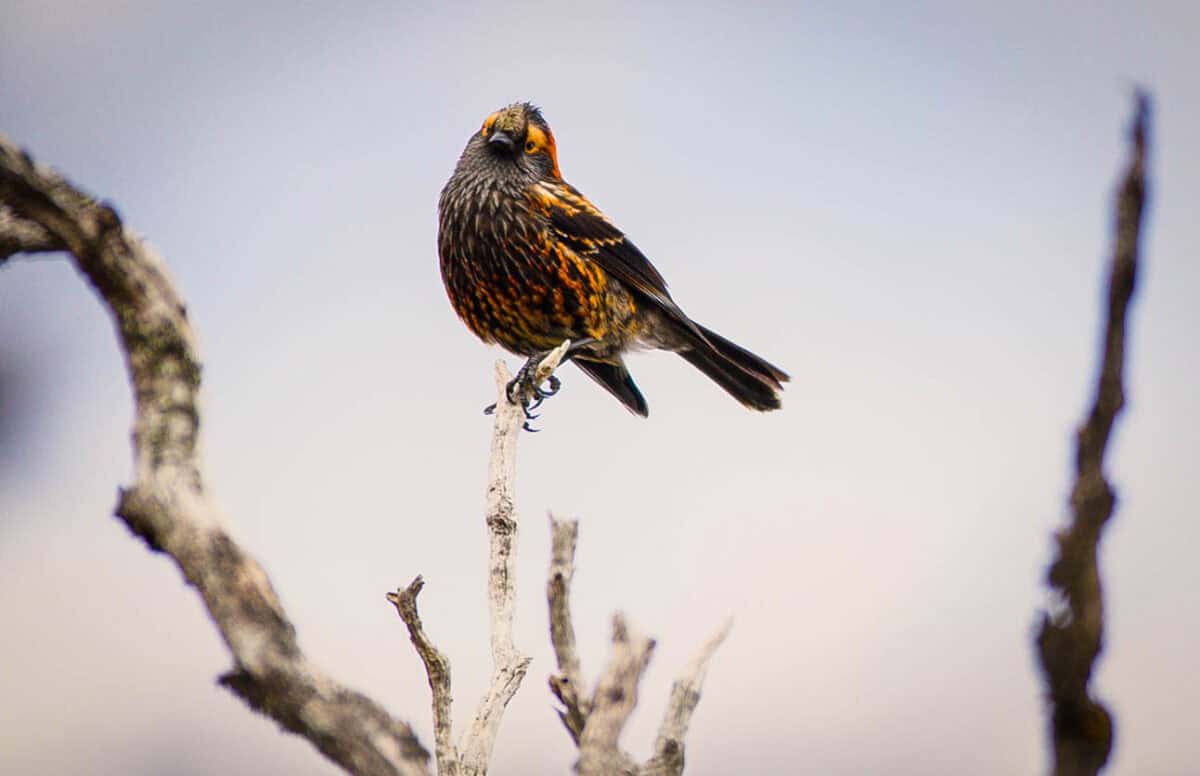
The ‘Akohekohe (Palmeria dolei) stands out as one of Hawaii’s most distinctive honeycreepers, sporting a remarkable appearance with its black plumage accented by orange-red feathers, white-tipped tail feathers, and most notably, a dramatic silver-white crest that curves forward over its bill. This striking bird is critically endangered and now confined exclusively to approximately 19 square miles of high-elevation rainforest on the windward slopes of Haleakalā volcano on Maui. Once found on both Maui and Moloka’i, the ‘Akohekohe’s population has dwindled to fewer than 3,800 individuals due to habitat loss and avian diseases. These energetic birds are specialized nectar feeders, primarily visiting the blooms of ‘ōhi’a lehua trees, though they also consume insects and fruit. The ‘Akohekohe’s aggressive territorial behavior, coupled with its loud and distinctive call, made it well-known to ancient Hawaiians. Today, conservation efforts focus on protecting the remaining high-elevation forest habitat and exploring techniques to control disease-carrying mosquitoes, offering a slim but critical chance for this spectacular species to avoid extinction.
The Resilient Pueo (Hawaiian Short-eared Owl)
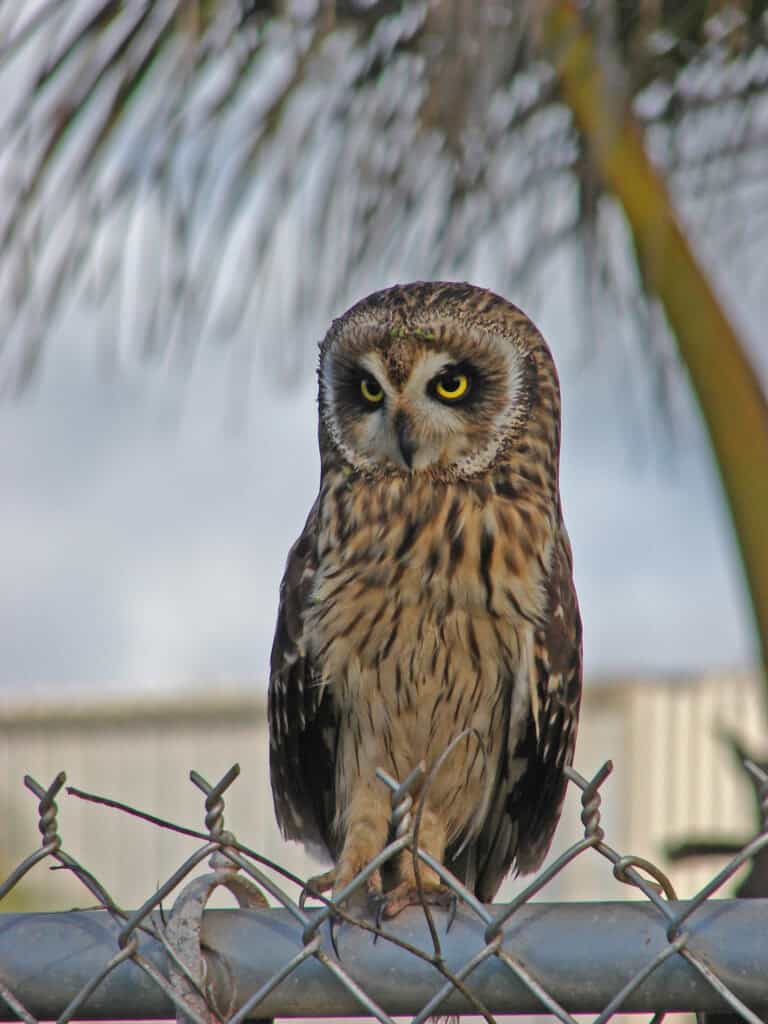
The Pueo (Asio flammeus sandwichensis), Hawaii’s endemic subspecies of the short-eared owl, holds a special place in both the island ecosystem and Hawaiian cultural traditions. Unlike most owl species, the Pueo is diurnal, often seen hunting during daylight hours over grasslands, shrublands, and montane parklands across all the main Hawaiian Islands. With mottled brown plumage that provides excellent camouflage and distinctive yellow eyes rimmed with black, the Pueo is smaller than its mainland relatives. In Hawaiian culture, the Pueo is deeply respected as an ‘aumakua (ancestral guardian spirit), believed to protect families and offer guidance. These adaptable owls primarily hunt rodents – including introduced species like rats and mice – making them valuable allies in protecting native ecosystems. Though more resilient than many Hawaiian birds, Pueo populations face challenges from habitat loss, vehicle collisions, and secondary poisoning from rodenticides. Their state listing as endangered on O’ahu reflects these growing threats, prompting increased conservation attention to ensure this culturally significant predator continues to soar over Hawaiian landscapes.
The Vocal Kaua’i ‘Ō’ō – A Ghost in the Forest
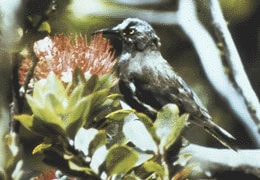
The Kaua’i ‘Ō’ō (Moho braccatus) represents one of the most poignant losses in Hawaiian avifauna. This member of the ‘Ō’ō family – now entirely extinct – was once known for its hauntingly beautiful song and glossy black plumage accented with yellow tufts on its thighs and under its wings. As the last surviving species in the family Mohoidae, the Kaua’i ‘Ō’ō’s extinction in 1987 represented the disappearance of an entire avian family from Earth. The final known individual was a male whose repeated calls for a mate were recorded by researchers – a recording that now serves as a powerful reminder of what has been lost. These birds were once hunted extensively for their yellow feathers, prized for Hawaiian royal featherwork. However, their ultimate demise came primarily from habitat destruction, introduced diseases, and non-native predators. The Kaua’i ‘Ō’ō’s story exemplifies the vulnerability of island species and underscores the irreversible nature of extinction. Though gone forever, its legacy lives on in recordings, museum specimens, and as a powerful symbol motivating conservation efforts for Hawaii’s remaining rare birds.
The Secretive ‘Akikiki (Kaua’i Creeper)
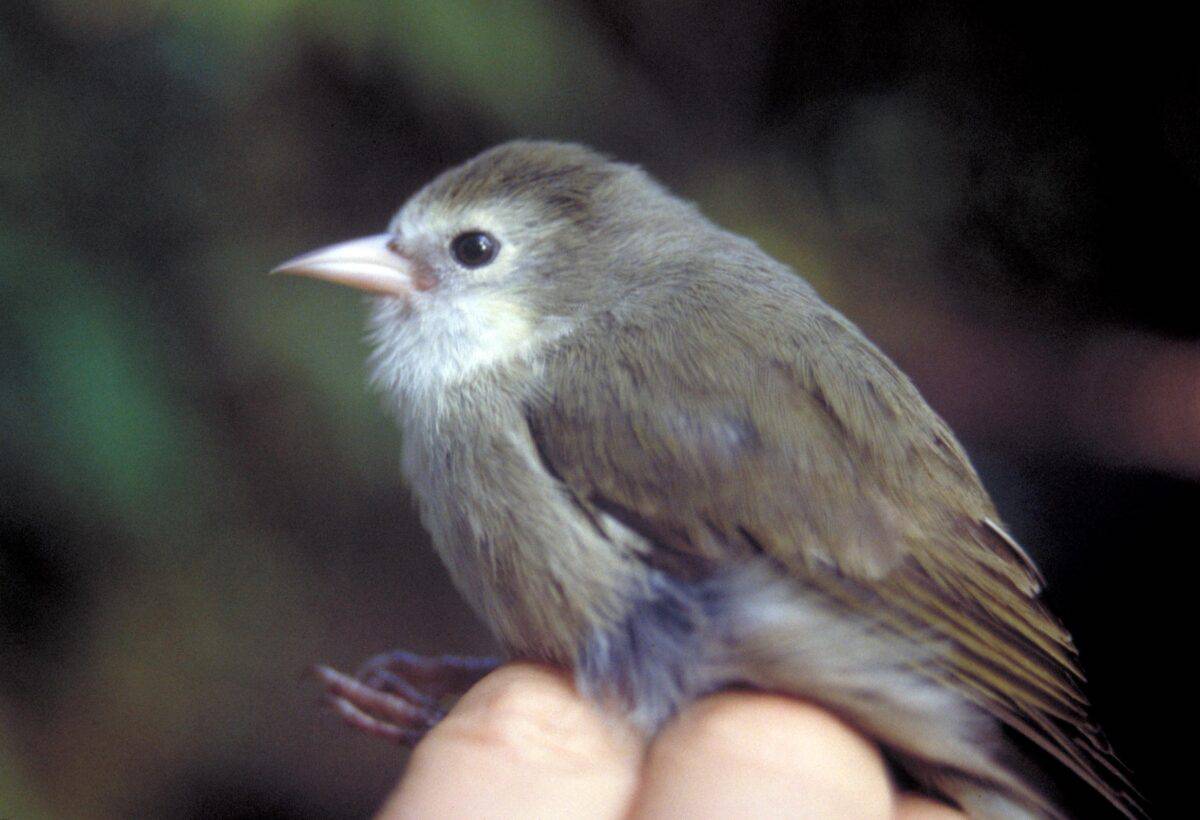
The ‘Akikiki (Oreomystis bairdi), sometimes called the Kaua’i Creeper, represents one of Hawaii’s most critically endangered birds with fewer than 50 individuals remaining in the wild. This small, non-descript gray and white honeycreeper is endemic to the high-elevation forests of Kaua’i, where it forages along tree trunks and branches in a manner reminiscent of nuthatches. Once found throughout Kaua’i’s forests, this species now occupies less than 10% of its historical range, confined to the island’s highest elevations in the Alaka’i Wilderness Preserve. The ‘Akikiki’s precipitous decline stems from a combination of habitat degradation, invasive plants, non-native predators, and most significantly, avian malaria spread by introduced mosquitoes. Conservation efforts have intensified dramatically, with the San Diego Zoo Wildlife Alliance and Hawaiian partners establishing a captive breeding program as population numbers reached critical levels. In a race against time, conservationists are working to create disease-free habitat while maintaining insurance populations in captivity. The ‘Akikiki’s precarious situation epitomizes the urgent conservation crisis facing many of Hawaii’s forest birds.
The Distinctive Palila (Hawaiian Finch)

The Palila (Loxioides bailleui) represents one of the last remaining finch-billed honeycreepers, distinguished by its yellow head, gray back, white belly, and stout finch-like bill specially adapted for its unique diet. This critically endangered bird is now restricted to a small area of māmane forest on the upper slopes of Mauna Kea on the Big Island of Hawaii – the only place on Earth where this species exists. The Palila’s survival is inextricably linked to the māmane tree (Sophora chrysophylla), as it relies almost exclusively on the immature seeds, flowers, and young leaf buds of this plant for food. This specialization has made the Palila exceptionally vulnerable to habitat degradation, particularly from introduced sheep and goats that browse on māmane trees. The Palila’s population has declined dramatically from approximately 6,600 birds in the early 1980s to fewer than 1,000 today despite legal protection through a landmark 1979 court case – the first to uphold the Endangered Species Act’s provision against habitat destruction. Conservation efforts focus on protecting and restoring māmane forest through fencing, ungulate control, and habitat restoration, offering hope that this unique bird might yet recover.
The Melodious ‘Ōma’o (Hawaiian Thrush)
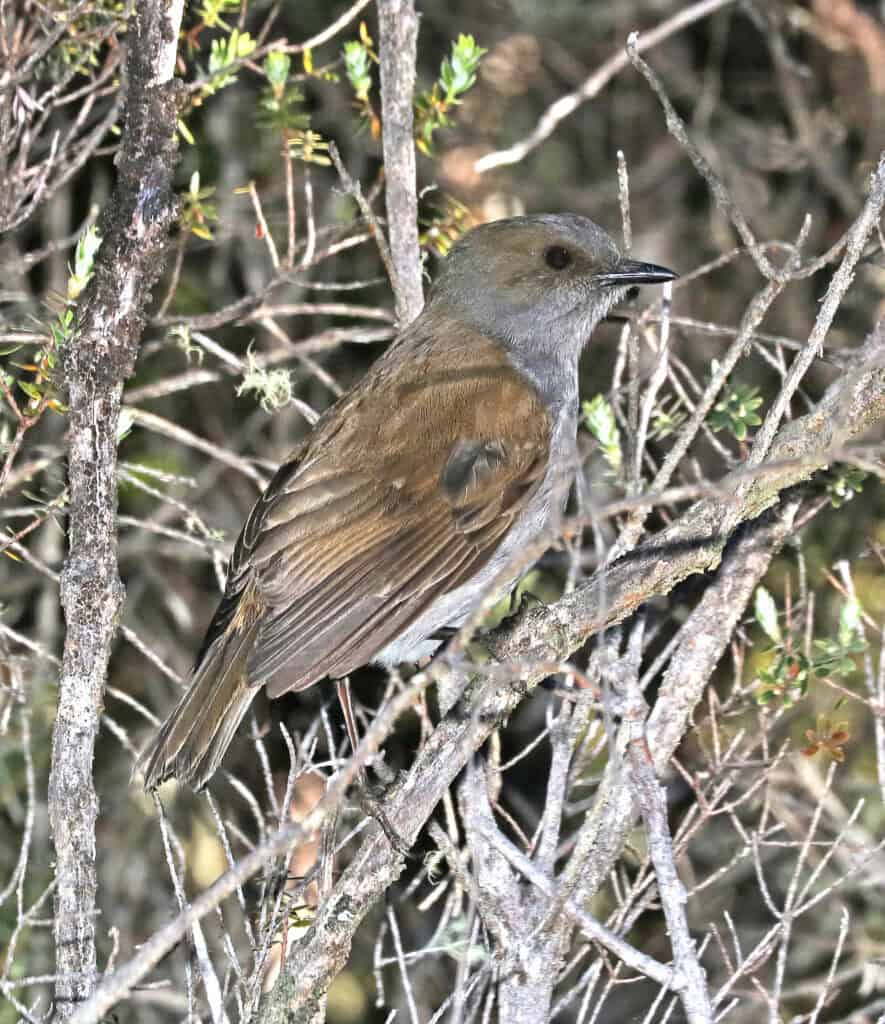
The ‘Ōma’o (Myadestes obscurus), also known as the Hawaiian Thrush, represents one of only two remaining endemic thrush species in Hawaii, surviving exclusively on the Big Island. With its olive-brown plumage, pale underparts, and distinctive red legs, the ‘Ōma’o may appear unassuming, but its rich, melodious song fills the forests with some of the most complex vocalizations among Hawaiian birds. These omnivorous thrushes play a crucial ecological role as seed dispersers for native plants, consuming fruits and berries before distributing the seeds across the forest landscape. Unlike many Hawaiian forest birds, the ‘Ōma’o has shown some resistance to avian malaria, allowing populations to persist at lower elevations than most native species. Currently, healthy populations exist primarily in the higher elevation forests of the Big Island, particularly in Hawaii Volcanoes National Park and the Hakalau Forest National Wildlife Refuge. Though less immediately threatened than many Hawaiian birds, the ‘Ōma’o faces ongoing challenges from habitat fragmentation, invasive predators, and disease. Conservation efforts focus on habitat protection and restoration to ensure this important seed disperser continues to thrive in Hawaii’s forests.
The Dazzling ‘Ākohekohe (Maui Parrotbill)

The Kiwikiu, or Maui Parrotbill (Pseudonestor xanthophrys), represents one of Hawaii’s most distinctive and critically endangered forest birds. With fewer than 150 individuals remaining, this olive-green honeycreeper sports a uniquely adapted parrot-like bill – stout, hooked, and designed for a specialized feeding technique. Unlike nectar-sipping honeycreepers, the Kiwikiu uses its powerful bill to pry apart wood and bark, extracting insect larvae hidden within—a unique ecological niche among Hawaiian birds. Once found across Maui and possibly Molokaʻi, this species is now restricted to approximately 19 square miles of high-elevation rainforest on the windward slopes of Haleakalā volcano. The Kiwikiu’s precipitous decline mirrors the broader conservation crisis facing Hawaiian forest birds, with habitat loss, invasive predators, and avian disease driving population reduction. Recent conservation efforts have included translocation attempts to establish new populations in restored habitat, though these have faced significant challenges. Despite setbacks, conservationists continue working to protect and expand suitable habitat while developing innovative solutions to disease threats, representing humanity’s commitment to preventing the extinction of this evolutionary marvel with its specialized adaptations.
The fight to save Hawaii’s rare and endemic birds represents one of conservation’s greatest challenges and most inspiring stories. With approximately two-thirds of Hawaii’s native bird species already lost to extinction, the remaining birds face a complex web of threats including habitat destruction, invasive predators like rats and cats, competition from introduced birds, and most devastatingly, mosquito-borne diseases such as avian malaria and avian pox. Climate change compounds these issues, as warming temperatures allow disease-carrying mosquitoes to reach previously safe high-elevation habitats. Despite these formidable challenges, conservation efforts have intensified dramatically in recent decades with innovative approaches offering genuine hope. Extensive habitat restoration projects are recreating native forests, while predator-proof fencing protects vulnerable populations. Captive breeding programs maintain insurance populations of the most critically endangered species, while cutting-edge research explores technologies to suppress mosquito populations using genetic techniques. The recovery of the Nēnē from just 30 individuals to over 3,000 today demonstrates that with sufficient commitment, resources, and public support, even the most endangered Hawaiian birds can be brought back from the brink of extinction. The fate of Hawaii’s unique birds ultimately rests in human hands—a responsibility to preserve these evolutionary marvels for future generations.
- The Best US National Parks for Spring Wildlife Watching - August 24, 2025
- Why Bears Play—and What It Teaches Us - August 24, 2025
- 12 Dog Breeds That Can Survive a Coyote Attack - August 24, 2025

